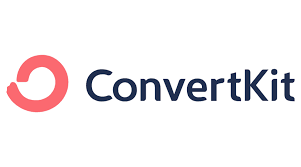Hey there, fellow marketers and business owners! Are you torn between GetResponse and ConvertKit for your email marketing needs in 2024? Well, you’re not alone. Both these tools are top contenders in the email marketing arena, but which one will give you the edge this year? Let’s dive deep into a head-to-head comparison, starting with a crucial aspect: User Interface and Experience.
| GetResponse | ConvertKit |
|---|---|
 |  |
| G2 Score – 4.2 out of 5 stars | G2 Score – 4.4 out of 5 stars |
| TrustRadius Score -8.0 out of 10 | TrustRadius Score – 8.8 out of 10 |
User Interface and Experience: The First Impression Counts
When you’re juggling multiple tasks in your business, the last thing you need is a complicated email marketing tool. Let’s see how GetResponse and ConvertKit stack up in terms of user interface (UI) and overall user experience (UX).
GetResponse: A Blend of Simplicity and Power
Right off the bat, GetResponse impresses with its clean, intuitive interface. It’s designed with the user in mind, making navigation a breeze, even for beginners. The dashboard is neatly organized, and you can find everything you need without clicking around endlessly.
Ease of Campaign Creation: Creating an email campaign in GetResponse feels like a walk in the park. With its drag-and-drop editor, you can put together stunning emails without any design skills. The editor is not just about looks; it’s packed with powerful features that allow you to personalize and optimize your emails for maximum engagement.
Automation Made Easy: GetResponse really shines in the automation department. Setting up automated email sequences is straightforward, thanks to the visual workflow builder. You can see your entire campaign laid out in front of you, making it easy to understand and tweak as needed.
ConvertKit: Simplicity for Creators
ConvertKit, on the other hand, takes a slightly different approach. It’s all about simplicity and clarity, especially appealing to bloggers, creators, and small businesses. The platform’s interface is clean and uncluttered, focusing more on functionality than flashy design.
Streamlined Campaign Setup :With ConvertKit, setting up email campaigns is a no-nonsense process. You won’t find a plethora of bells and whistles, but you’ll have everything you need to create effective, straightforward emails. The emphasis is on the content rather than elaborate designs, which resonates well with content creators.
Automation with a Focus on Efficiency: ConvertKit offers automation features that are easy to use, yet powerful. The platform allows you to set up autoresponders and manage your subscribers efficiently. The automation tools might not be as visually intricate as GetResponse’s, but they do the job well, particularly for those who prefer a more direct approach.
UI and UX: Choosing What Works for You
In the battle of UI and UX, GetResponse and ConvertKit both offer strong but distinct experiences. GetResponse is your go-to if you’re looking for an intuitive interface with powerful design and automation capabilities. ConvertKit is ideal if simplicity and content-focused design are your top priorities.
Email Automation: Crafting Your Communication Strategy
In the realm of email marketing, automation is your secret weapon. It lets you send the right message at the right time without being glued to your computer. How do GetResponse and ConvertKit measure up in this arena? Let’s find out.
GetResponse: Automation That Feels Almost Futuristic
GetResponse takes automation to a whole new level. It’s like having a personal assistant who knows exactly what your subscribers need and when they need it.
Sophisticated Yet User-Friendly Automation Tools: The platform’s automation capabilities are both comprehensive and surprisingly easy to use. You can set up complex sequences based on specific triggers like subscriber actions, time intervals, or even special occasions. The beauty of GetResponse’s automation lies in its flexibility – you can tailor your communication strategy to fit your unique audience.
Targeted Campaigns Made Simple: With GetResponse, segmentation and personalization are a breeze. You can segment your lists based on various criteria and send highly targeted messages. This level of personalization means your subscribers receive content that resonates with them, boosting engagement and conversion rates.
ConvertKit: Automation for the Modern Creator
ConvertKit approaches automation with a creator’s mindset. It’s all about making things simpler but more impactful.
Straightforward Automation for Effective Engagement: ConvertKit’s automation tools might not be as intricate as GetResponse’s, but they pack a punch. The platform allows you to set up autoresponders and automated email sequences that nurture your subscribers through their journey. It’s more about creating meaningful connections rather than just sending emails.
Focus on Building Relationships: ConvertKit excels in helping you build and maintain relationships with your audience. The automation is designed to deliver timely, relevant content that aligns with your subscribers’ interests and actions. This focus on relationship-building is crucial, especially for bloggers, authors, and online creators who rely on a strong connection with their audience.
Automation: A Key Player in Your Email Marketing Game
Both GetResponse and ConvertKit offer powerful automation tools, but they cater to different needs. GetResponse is ideal if you want advanced automation capabilities with a user-friendly interface. ConvertKit, on the other hand, is perfect for those who need straightforward, effective automation that focuses on building and nurturing subscriber relationships.
Deliverability: Ensuring Your Message Lands in the Inbox
In the vast ocean of email marketing, deliverability is the lighthouse guiding your messages safely to the inbox shores. Let’s see how GetResponse and ConvertKit fare in ensuring your emails don’t get lost at sea.
GetResponse: Keeping Your Emails on the Right Track
GetResponse is quite the navigator when it comes to email deliverability. It ensures your emails not only leave the harbor but also reach their intended destination.
Strong Infrastructure for High Deliverability Rates: GetResponse has built a robust infrastructure designed to maximize deliverability. This includes maintaining healthy IP addresses and adhering to best practices that keep their sender reputation strong. What does this mean for you? Better chances of your emails hitting the inbox, not the spam folder.
Proactive Measures to Combat Spam: GetResponse doesn’t just send out your emails and hope for the best. It provides tools to test your emails against common spam filters. This preemptive action lets you tweak your content to improve deliverability before hitting the send button.
ConvertKit: Delivering Your Content with Precision
ConvertKit approaches deliverability with a sharp focus on content relevance and subscriber engagement, which are key factors in ensuring emails land in the inbox.
Personalized Sending for Better Engagement: ConvertKit encourages the use of personalized email addresses for sending campaigns, which helps in building a stronger sender reputation. This practice is particularly effective for creators and bloggers who often rely on building personal connections with their audience.
Segmentation and Clean Lists for Improved Deliverability: With ConvertKit, you can easily segment your subscribers, ensuring that each group receives content that’s relevant to them. This relevance reduces the likelihood of your emails being marked as spam. Additionally, ConvertKit focuses on maintaining clean email lists, which is a crucial factor in deliverability.
Navigating the Waters of Email Deliverability
Both GetResponse and ConvertKit understand the importance of deliverability in email marketing. GetResponse offers a more technical approach with robust infrastructure and spam testing tools, making it suitable for those who want to dive deep into the mechanics of email deliverability. ConvertKit, with its focus on content relevance and subscriber engagement, is ideal for creators and small businesses looking for a more straightforward approach to ensure their messages are heard.

Related: Check out our free SEO suite

Analytics and Reporting: Understanding Your Email Impact
In the fast-paced world of digital marketing, data is your compass. Analytics and reporting features in your email marketing tool can help you navigate towards success. Let’s compare how GetResponse and ConvertKit provide insights into your campaigns.
GetResponse: Deep Diving into Data
GetResponse doesn’t just give you data; it offers insights that help you understand your audience better and refine your strategies.
Comprehensive Analytics for Informed Decisions: With GetResponse, you can access a wealth of data about your email campaigns, including open rates, click-through rates, and subscriber activities. This data is not just numbers; it’s a roadmap to what’s working and what’s not in your campaigns.
Customizable Reports for Tailored Insights: You can customize reports in GetResponse to focus on the metrics that matter most to your business. Whether you’re tracking a specific campaign or monitoring overall engagement trends, GetResponse’s analytics tools are flexible enough to meet your needs.
Visual Representations for Easy Comprehension: GetResponse also offers visual analytics, like click maps, that provide a more intuitive understanding of how subscribers interact with your emails. These visuals are not just informative but also easy to interpret, making data analysis less of a chore.
ConvertKit: Simplified Analytics for Creators
ConvertKit takes a more streamlined approach to analytics, focusing on simplicity and clarity.
Essential Metrics at Your Fingertips: ConvertKit provides all the essential metrics you need to gauge the performance of your email campaigns. While it may not delve as deep as GetResponse, it gives you a clear picture of your campaign performance.
User-Friendly Reporting for Quick Insights: The platform ensures that its reporting tools are easy to use and understand. This is particularly beneficial for creators and small business owners who need quick insights without getting bogged down in complex data analysis.
Focus on Subscriber Engagement: ConvertKit’s analytics emphasize subscriber engagement, helping you understand how your audience interacts with your content. This focus is crucial for creating content that resonates with your audience and drives conversions.
Making Sense of Your Email Marketing Data
Both GetResponse and ConvertKit offer valuable insights into your email campaigns, but they cater to different user preferences. GetResponse is ideal if you’re looking for detailed analytics and customizable reporting features. On the other hand, ConvertKit is perfect for those who need straightforward, easy-to-understand reports that focus on engagement and content effectiveness.
Pricing and Plans: Matching Your Budget with Your Email Marketing Goals
Choosing the right email marketing tool also means finding one that fits your budget while meeting your needs. Let’s break down the pricing structures of GetResponse and ConvertKit to see which offers the best value for your investment.
| GetResponse | Basic Plan: Starting from $15/month for email marketing, autoresponders, unlimited landing pages, and basic segmentation. Plus Plan: Starting at $49/month, including automation, webinars (up to 100 participants), and contact scoring. Professional Plan: Starting at $99/month, offering advanced automation, webinars (up to 300 participants), and paid webinars. Max Plan: Custom pricing, providing advanced features like transactional emails, dedicated support, and single sign-on (SSO). |
| ConvertKit | Free Plan: Offers basic features for up to 1,000 subscribers, including email broadcasts, landing pages, and forms. Creator Plan: Starting at $29/month for up to 1,000 subscribers, including automation and third-party integrations. The price increases with more subscribers. Creator Pro Plan: Starting at $59/month for up to 1,000 subscribers, adding advanced features like newsletter referral system, subscriber scoring, and advanced reporting. |
GetResponse: Flexible Pricing for Varied Needs
GetResponse offers a tiered pricing strategy, designed to cater to businesses of different sizes and requirements.
Tiered Options Catering to a Range of Users: The plans range from basic to more advanced options, each offering an increasing number of features. This allows you to choose a plan that aligns with your specific needs and upgrade as your business grows.
Features Across All Levels: Even at the entry-level, GetResponse provides a comprehensive set of features, ensuring that small businesses and beginners have access to powerful email marketing tools. As you move up the tiers, features like advanced segmentation, automation, and webinar hosting become available.
Cost-Effectiveness for Long-Term Users: GetResponse also offers discounts for annual and biennial plans, making it a more economical option for long-term users. This, coupled with a 30-day free trial, makes GetResponse an attractive option for those looking to get good value over time.
ConvertKit: Straightforward Pricing for Creators
ConvertKit takes a slightly different approach to pricing, focusing on simplicity and straightforwardness.
Simple Pricing Model: ConvertKit offers a straightforward pricing model that scales with the number of subscribers. There are no complicated tiers or packages – just a clear, linear pricing structure that makes it easy to understand what you’re paying for.
Essential Features Available to All Users: Even at the base level, ConvertKit provides all the essential features needed for effective email marketing. This includes automation, landing pages, and the ability to send unlimited emails.
Free Plan for Beginners: ConvertKit offers a free plan for up to a certain number of subscribers, which is ideal for beginners or small businesses just starting with email marketing. This plan includes basic features, allowing users to grow their audience before committing financially.
Assessing the Value for Your Investment
In comparing GetResponse and ConvertKit, it’s clear that both offer different pricing advantages. GetResponse is a great choice for those who need a more comprehensive set of features and are willing to pay a bit more for advanced capabilities. ConvertKit, with its straightforward pricing and essential feature set at all levels, is ideal for creators and small businesses looking for simplicity and cost-effectiveness.
Conclusion:
GetResponse emerges as a versatile tool, offering a range of features from sophisticated automation to in-depth analytics. Its tiered pricing structure makes it a suitable choice for businesses of various sizes, allowing for scalability as your marketing efforts grow. If you’re looking for a platform that offers a bit of everything – from detailed data analysis to advanced segmentation and automation – GetResponse is a strong contender.
ConvertKit, with its straightforward approach, appeals to creators, bloggers, and small business owners. Its focus on essential features, user-friendly interface, and straightforward pricing makes it an excellent option for those who value simplicity and effectiveness over a broad array of features. If your goal is to build and maintain strong subscriber relationships with efficient and uncomplicated tools, ConvertKit is likely the better choice for you.
In choosing between GetResponse and ConvertKit, consider your specific needs, budget, and the level of complexity you’re comfortable with. GetResponse is ideal for those seeking a comprehensive tool with extensive features, while ConvertKit is perfect for users who need a straightforward, effective platform. Remember, the right email marketing tool is not just about features; it’s about finding a platform that aligns with your marketing strategy, enhances your efficiency, and ultimately contributes to your business growth.
Read next
- Impact of Predictive Analytics on Sales Forecasting: A Deep Dive!
- How to use GetResponse: An Explainer!
- How to use Loomly: An In-Depth Explainer
- How to use SocialPilot: An Explainer!
- How to use Sendible: An Explainer






















Comments are closed.